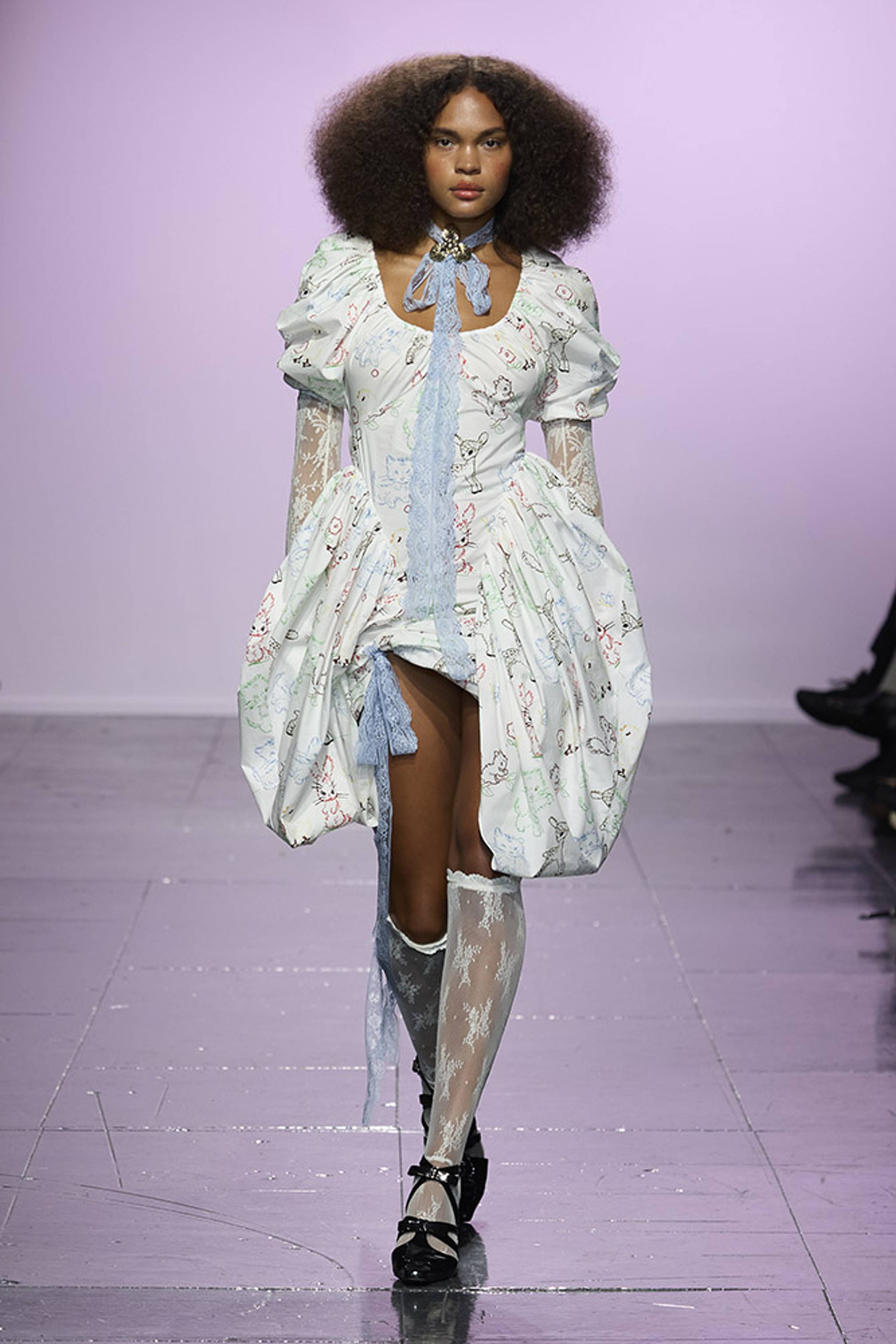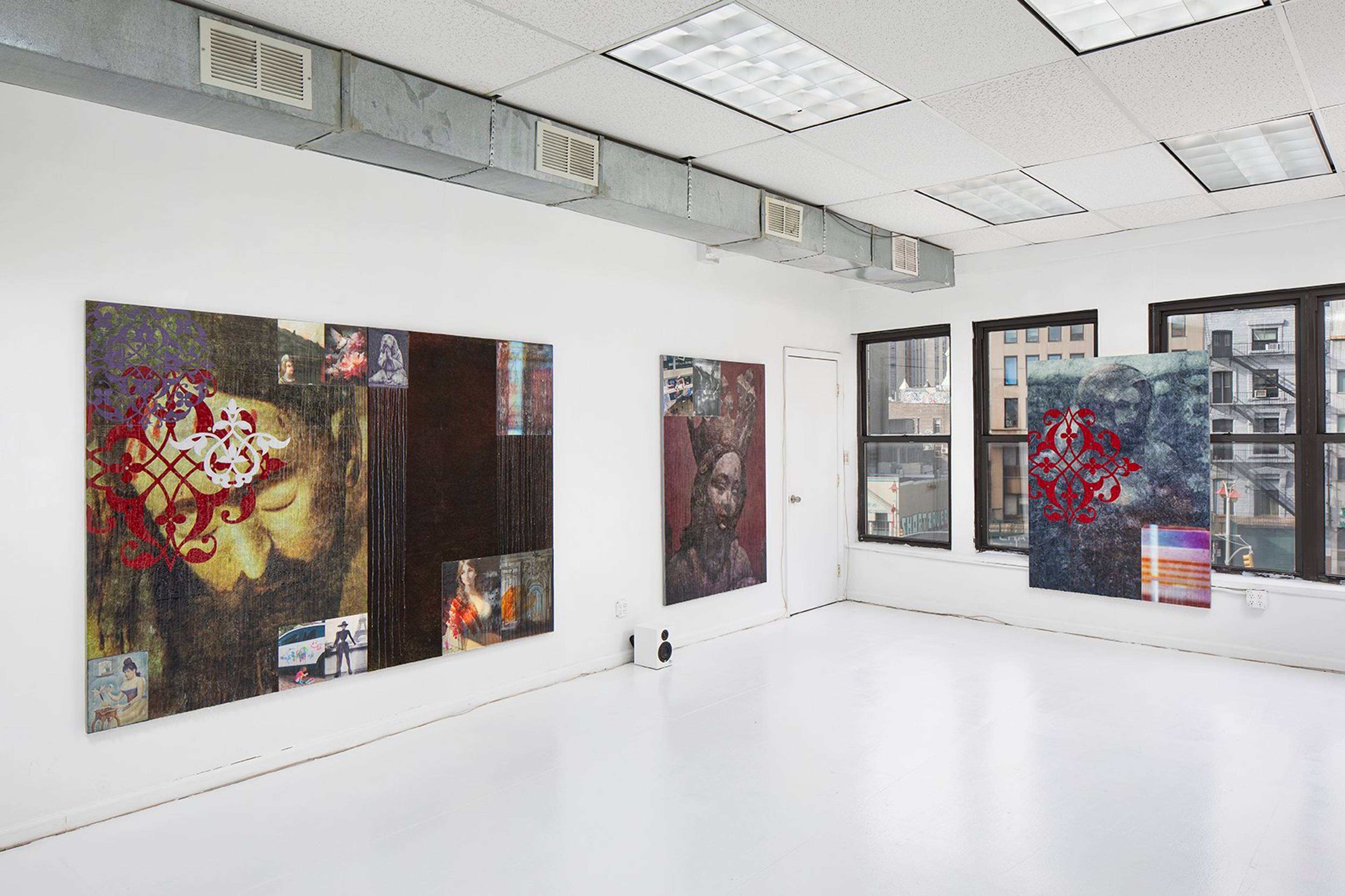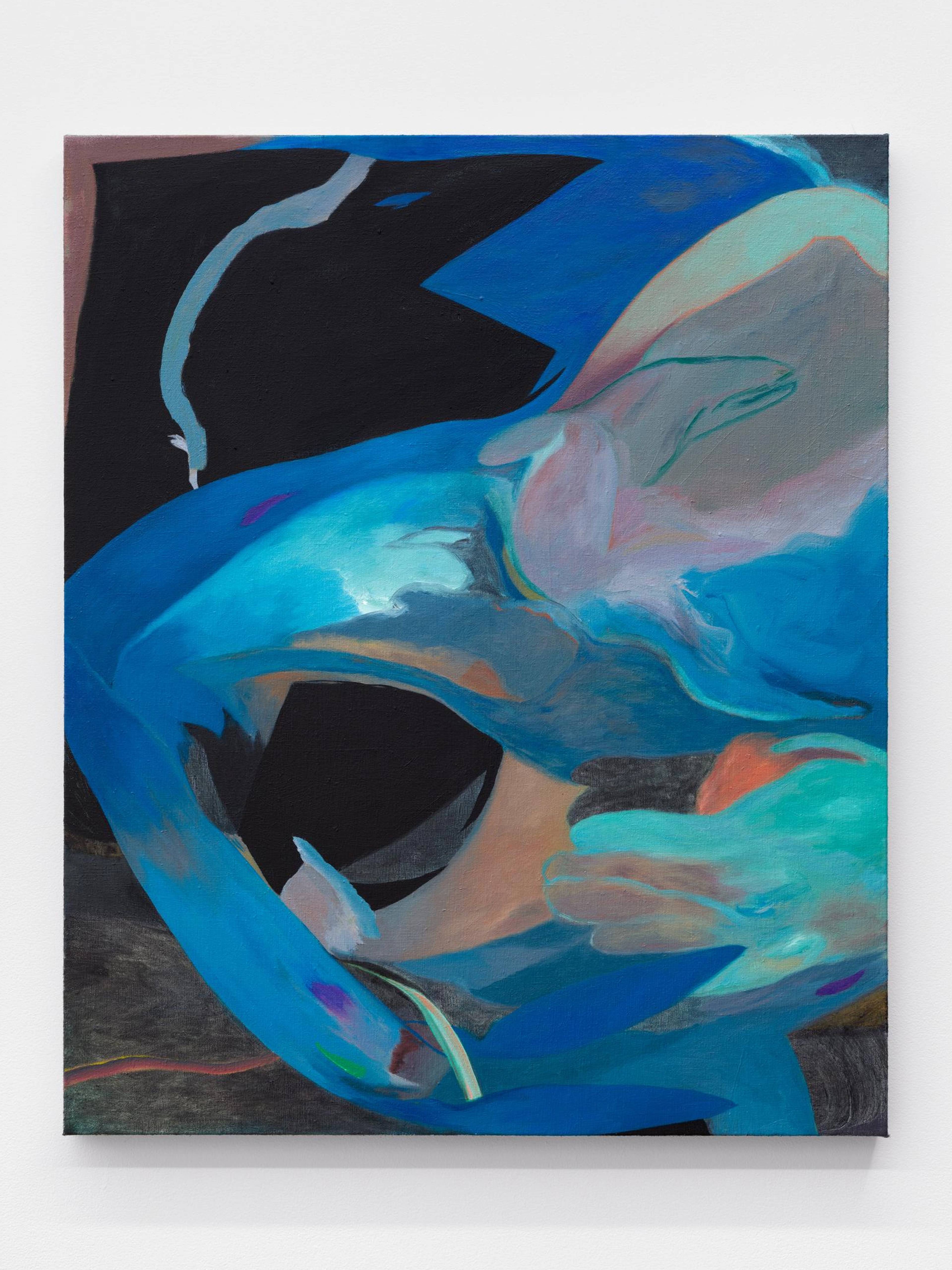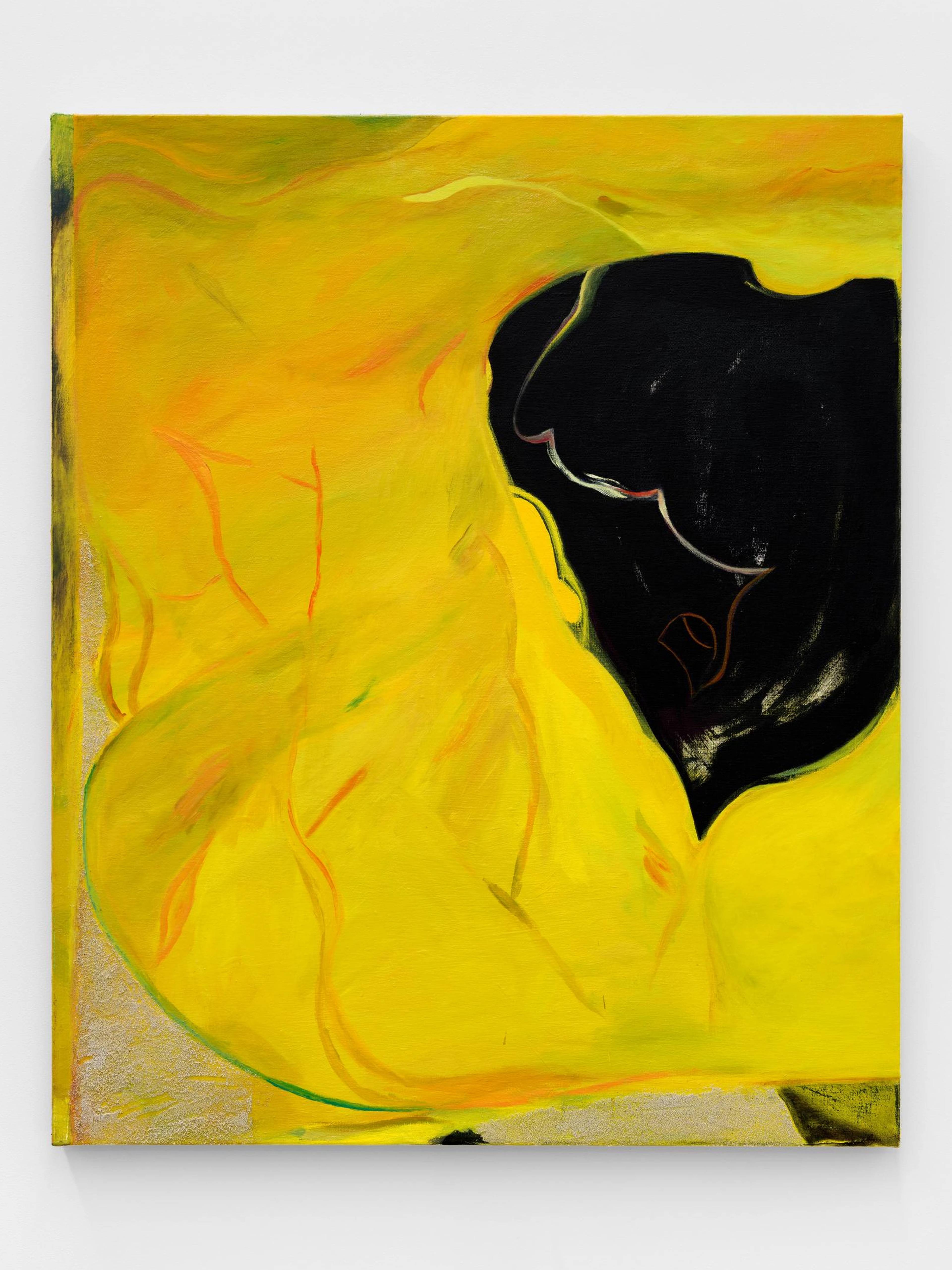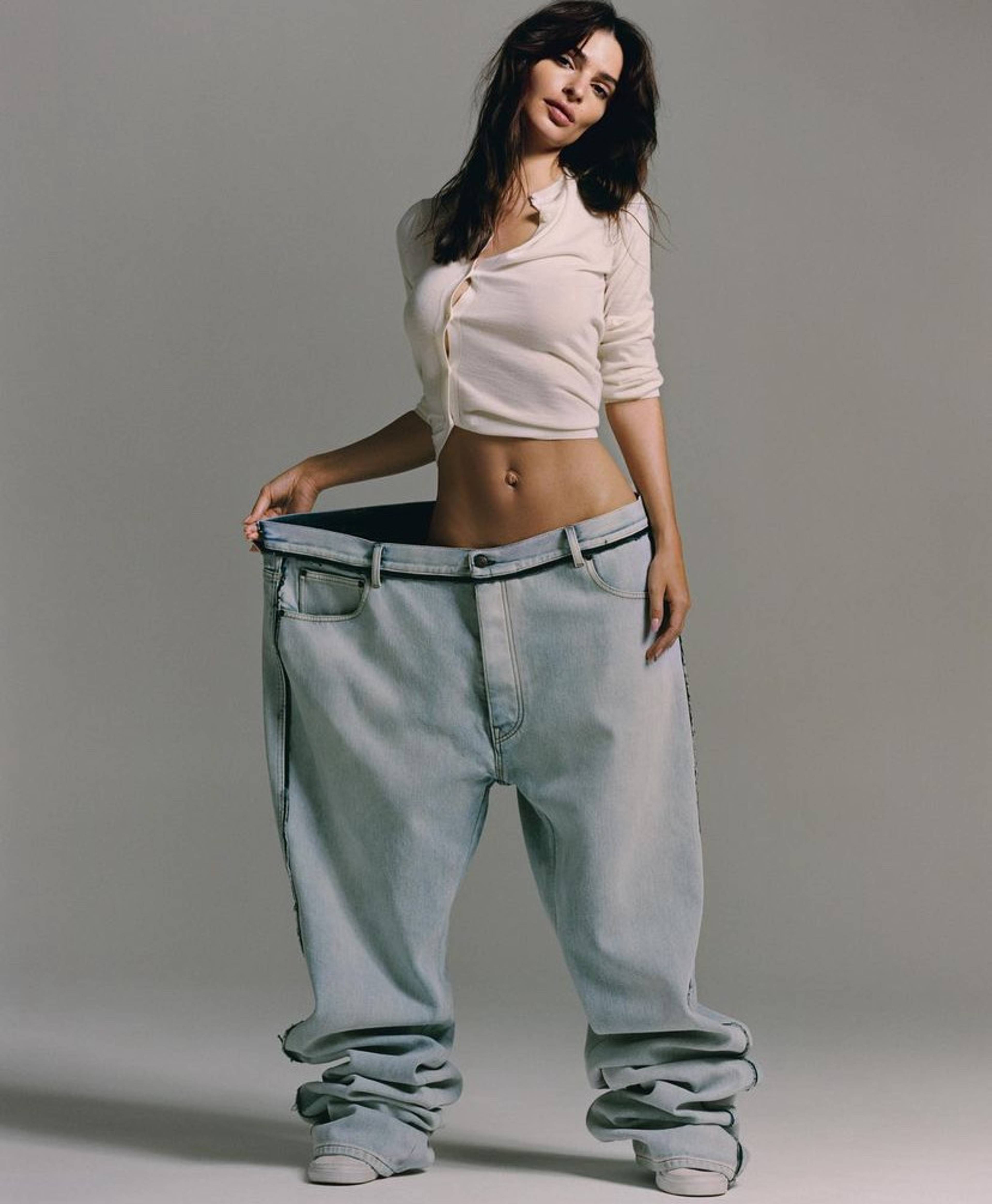MATILDA LIN BERKE – writer, New York
👍 jonatan leandoer96, Sugar World
jonatan leandoer96, Sugar World, 2023
At a performance of Handel’s Messiah, I found myself deciding that the hardest qualities to convey (musically) are immersion and intimacy, which sound like opposites – loud vs. quiet, big vs. small – but are actually more or less the same. Sugar World (a collaboration between jonatan leandoer96, Yung Lean’s side project, and Danish producer Frederik Valentin) is near-perfect because it understands this relationship. The album feels entire, like a biome in a jar, a sensory deprivation chamber; at the same time it is close to you, it surrounds you, engulfing you like an insect in sap or honey. Lean cruises his way through cloud rap, blue-eyed soul, surf rock and – on “Rivers of Another Town” – a swooping riff that suggests the opening credits to an anime series. He’s got a puerile sense of humor (“I don’t know half the people in my phone / So I just call them idiots” plus “Nightmare Amusement Park,” which is either a series of dick jokes or a very long one) and a heart (the eponymous “Sugar World” and “Swedish Elvis Storm,” my favorite songs on the album, are both beautiful and true)! He undercuts himself over and over again. It’s like a new New Sincerity.
👍 Yuhan Wang’s SS24 RTW Fata Morgana
Runway looks form Yuhan Wang Spring 2024 Ready-to-Wear collection
Girlhood has been in lately. Yuhan Wang’s SS24 RTW Fata Morgana (named for a type of superior mirage, a reality distortion that shares its name with the “fairy Morgan” of Arthurian legend) – is just the kind of thing a girl would dream up: decked out in ribbons and transparencies and perfect shiny curls, Wang’s models resemble paper dolls or avatars in a Flash-enabled dress-up game, the original e-girls. I especially like Look 32, a matching crop top and skirt beaded in a stylized strawberry-plant pattern (the fruit nestled among its flowers and leaves) that evokes a mille-fleurs tapestry in its deliberate two-dimensionality – the pieces lie flat against the body as if they’d been drawn or embroidered on – all embellishment, edges and borders. The show takes inspiration from Thomas Hardy’s Tess of the D’Urbervilles; an early scene in which a wolfish pretender forces strawberries upon the ingénue betrays the ease with which the world devours innocence and sweetness. All of a sudden the whipped-cream fantasy is gone. In Fata Morgana, girls will be girls a little while longer; the predator-prey relation remains indistinct, implicit. I think of something Emma Stone says in Yorgos Lanthimos’s Poor Things (2023) – “I have adventures and found nothing but sugar and violence.”
👍 “Bianco Latte” (by Silvia Martinelli at Giardini di Toscana)
“Bianco Latte” by Silvia Martinelli
“Bianco Latte” (by Silvia Martinelli at Giardini di Toscana), which means “white milk,” is actually a fairly photorealistic interpretation of White Rabbit Creamy Candy. I think people like gourmand fragrances so much because they’re object-oriented – recognizable; grounding; readily classified and contextualized; popular and uncomplicated, like a candle that smells like pie, or candy-scented body spray. The good ones, though, are more than true-to-life. Gourmands are trapped and shaped by the limitations of their medium; they’re not edible, so they have to make up the difference somehow. Too close to reality and they fall flat. “Bianco Latte” succeeds because it understands its positionality: as a synthetic version of things that already exist, it’s responsible for some additional synthesis, some production of complexity. On skin, it undergoes a phase change – condensed milk solids loosen and dissipate into steam, vanillic ephemera. It’s a scent that captures motion, which says a lot if you care to listen. Lactonic and laconic are only a letter apart.
👍 Jon Rafman and Parker Ito, “Poets, Gamblers, Fools”
Lubov, New York
4 Nov 2023 – 14 Jan 2024
Views of “Poets, Gamblers, Fools,” Lubov, New York, 2023. Photos: Nicholas Knight
Because Post Internet, like a prophetic nightmare, predicted/codified the aesthetic of lo-fi digital bricolage, “Skibidi Toilet” reminds me of “Poets, Gamblers, Fools” (Jon Rafman and Parker Ito), which is technically post-Post Internet and will be up through the end of December at Lubov Gallery on the LES, though of course the artists’ project—rumination rather than reflection – is far more tolerable (from a sensory perspective) and compelling (from an intellectual one). Its mechanisms of psychic control are no less present; Rafman’s deeply unsettling “Punctured Sky” PSYOPed me and my friend into a new fixation on RPGs/simulation hypotheses – if reality is a gamified distraction, it’s because something much worse lies beneath; this, we concluded, is what makes the possibility so distinctly terrifying – and a syrupy plate of orange chicken. Like the woman said, sugar and violence. On my copy of the exhibition text, I wrote “Doomers, Gooners, Groomers”; I meant it favorably. I love a good PSYOP.
👎 The Internet
From the web series “Skibidi Toilet”
It’s not fashionable to say that the internet scares me – not because I don’t understand it, which I don’t; or because it’s dangerous, which it is, though not uniquely – but because of its sheer scale and capacity; because it feels like looking into a pit, and because I always end up seeing farther than I mean to. “Skibidi Toilet” (an RPG-inflected Source Filmmaker-rendered web series by Alexey Gerasimov, who is one year older than me and goes by the name DaFuq!?Boom! on YouTube) is a perfect metonym for the crisis, or condition, of contemporary information: hacked apart and compressed together, distorted and self-reflexive, persistent, consuming, totalizing. In keeping with the memetic tradition of horror, it clings to me like a creepypasta or a virus, a malevolent Tamagotchi I’ve been compelled to carry, sustain, and explain – though, like an ancient Lovecraftian entity, it defies description, even now, which makes it worse. I came to it on my own, but I still blame the New York Times.
__
MICHELLE COTTON – curator, Mudam
👍 Cameron Rowland, “AMT 45i”
MMK, Frankfurt
11 Feb–15 Oct 2023
Cameron Rowland, Bug trap, 2023, rope, rental
“Bugs in the wheat” was code among the enslaved. It meant that slave patrollers had discovered their secret meeting. Enslaved people protected these meetings by tying a rope across the path. The rope tripped the patrol horse and threw the patroller.
Cameron Rowland , Osnaburgs, 2023, 18th-century loom from Osnabrück, 195 x 213 x 175 cm
Linen was the largest German export by value throughout the 17th and 18th centuries.[1] Linen was the primary German good produced explicitly for the slave trade. During this time, labor costs in Central Europe lagged behind those in Western Europe, rendering Germany “a low-wage region, which oriented its production toward high-price Western markets.” [2] German merchants took advantage of this position by maintaining the depressed wages of the former peasant class, who they paid on a piece-work system. These merchants made German linen a staple of the slave economy by ensuring it was sold for less than the competition. The less money the slave owner spent on clothing, feeding, and housing slaves, the greater the plantation’s net profits would be. The slave economy was an essential market for the products of underpaid wage labor in Germany, and elsewhere in Europe.
“Osnaburgs” or “osnabrigs,” were made in Osnabrück. According to a 1744 report on the British linen trade, all the black people in the West Indies were “generally clothed with German linens, from 6d to 9d an Ell, called Osnaburghs.” [3] report indicated that all 70,000 enslaved people in Barbados were “usually clothed with Foreign ‘Osnabrughs.’” [4] This practice translated into law in instances when the slave codes prohibited enslaved people from wearing anything other than “negro cloth.” The 1735 South Carolina slave codes dictated that:
"Be it enacted by the authority aforesaid. That no owner or proprietor of any negro slave or other slave whatsoever, (except livery men or boys,) shall permit or suffer such negro or other slave to have or wear any sort of apparel whatsoever, finer, other, or of greater value, than negro cloth, duffelds, coarse kearsies, osnabrigs, blue linnen, checked linnen or coarse garlix or calicoes, checked cottons or scotch plaids, not exceeding ten shillings per yard for the said checked cottons, scotch plaids, garlix or calico, under the pain of forfeiting all and every such apparel and garment." [5]
Black fugitives were tracked by their appearance. Fugitive slave ads circulated descriptions of black people who had run from bondage. These descriptions allowed any white person who read them to function as a deputy of the slave patrol and a sentry of the plantation. Osnaburgs were an identifier of enslavement. As such, they were one of the most common descriptors of fugitives from slavery.
[1] Klaus Weber, “Germany and the Early Modern Atlantic World: Economic Involvement and Historiography,” in Beyond Exceptionalism: Traces of Slavery and the Slave Trade in Early Modern Germany, 1650–1850, ed. Rebekka von Mallinckrodt, Josef Köstlbauer, and Sarah Lentz (Berlin: De Gruyter, 2021), 46.
[2] Klaus Weber, “Deutschland, der atlantische Sklavenhandel und die Plantagenwirtschaft der Neuen Welt,” Journal of Modern European History 7, no. 1 (March 2009): 57–58; Klaus Weber, “Linen, Silver, Slaves, and Coffee: A Spatial Approach to Central Europe’s Entanglements with the Atlantic Economy,” Culture & History Digital Journal 4, no. 2 (December 2015): 11.
[3] Weber, “Germany and the Early Modern Atlantic World,” 32.
[4] Weber, “Linen, Silver, Slaves, and Coffee,” 8.
[5] “An Act for the Better Ordering and Governing of Negroes and Other Slaves, 1735,” in The Statutes at Large of South Carolina: Containing the Acts Relating to Charleston, Courts, Slaves, and Rivers, ed. David J McCord (Columbia: A. S. Johnston, 1840), 396.
Institutional critique with genuine historic and societal relevance.
👍 “Coded: Art Enters the Computer Age 1952-1982”
LACMA, Los Angeles
12 Feb – 2 Jul 2023
View of “Coded: Art Enters the Computer Age 1952-1982,” LACMA, Los Angeles, 2023
Hans Haacke, News, 1969/2008
Leslie Jones told me that she had worked on this exhibition for ten years, and it showed. It is only recently that the computer art of the 1960s and 1970s has been reappraised as the first examples of digital art, or rather a technical antecedent to the way that art is produced in the 21st century. This exhibition is by far the best I have seen on this subject. If you missed it, the catalogue is an excellent substitute and a very generous source of information.
👍 Diego Marcon, “Dramoletti”
Fondazione Nicola Trussardi, Teatro Gerolamo, Milan
5 – 30 Jun 2023
Diego Marcon, Ludwig, 2018. Installation view, Fondazione Nicola Trussardi, Teatro Gerolamo, Milan, 2023
The first monographic survey of Diego Marcon’s work was also the first in a long line of somewhat overdue institutional solo exhibitions devoted to his oeuvre. There were also excellent exhibitions at Centro Pecci, Prato and Kunsthalle Basel this year, but the presentation of a suite of Marcon’s films at the Teatro Gerolamo – a purpose-built, 19th-century puppet theater next to Milan’s Duomo – was exceptional.
👍 Kazuko Miyamoto
Museo Madre, Naples
6 Jul – 6 Nov 2023
Kazuko Miyamoto, Fatatabi, 1987, twigs, twisted wrapping paper, 130 x 113 cm
Simply the best exhibition I saw this year by an artist I didn’t previously know. The first European retrospective survey of Miyamoto’s work was also the first exhibition at Madre by Eva Fabbris. A study of beauty, elegance, humor and poetry that has stayed with me.
👍 Kyiv Biennial 2023
Various locations, Kyiv, Ivano-Frankivsk, Uzhhorod, Vienna, Warsaw, Lublin, Antwerp
17 Oct – 17 Dec 2023
Nikita Kadan, On Protection of the Monuments, 2023. Courtesy: Augarten Contemporary, Vienna. Photos: Joanna Pianka
View of the Kyiv Biennial, 2023, Augarten Contemporary, Vienna
Pavel Brăila, Magic Carpet, 2019
I only saw the central (Viennese) part of this multi-venue, multi-city biennial, but it was political, thought-provoking, raw, and intelligent. In short, pretty much everything I ever hope to find in biennials, but almost never do.
👎 The Instrumentalization of Culture by Populist Governments
Brexit supporters celebrate Britain leaving the EU in London on 31 January 2020
To take an example that I am particularly aware of, the conservative government in the UK claims to be addressing historic imbalances by redistributing arts funding within its so-called “levelling-up” policy. Culture is used for high-profile window dressing by moving relatively small amounts of governmental subsidy from one arts organization to another, in order to superficially address economic disparities across the British regions. In practice, it makes a negligible difference to the economies of marginalized communities, while inflicting huge damage to often exemplary organizations that have their funding cut. The Conservatives have a history in crass instrumentalization. Their 2022 “Festival of Brexit,” officially titled “Unboxed,” aspired to generate an audience of 66 million (in reality, it achieved 238,000). An official Parliamentary report concluded simply that it was “an irresponsible use of public money,” while the chair of the report’s committee (himself a Conservative) described it as “an excessive waste of money” and “a fiasco.”
___
SANDRO DROSCHL – curator, HALLE FÜR KUNST Steiermark
👍 Edgardo Giménez, “No habrá ninguno igual”
MALBA, Museo de Arte Latinoamericano de Buenos Aires
25 Aug – 13 Nov 2023
Views of “No habrá ninguno igual,” MALBA, 2023
Pop in Argentina looks different. Again. Pop by Edgardo Giménez, even more so. The self-taught artist has been everything in one: painter, sculptor, architect, stage designer, graphic artist, performer, and, above all, a star. Since the 1960s, the gifted poly-artist has been merging image and word into one – into his cause, a madness of irony and parody – or, as others humorlessly call it: art.
The MALBA and its deserving chief curator, María José Herrera, organized a retrospective tailor-made for him, a scenography that is also and above all an exhibition. Giménez did not miss the opportunity to expand his well-known historical works with larger-than-life dancing monkeys, rabbits, and similar fantasies with new productions that, surprisingly, can hardly be distinguished from their historical counterparts. For those who don’t speak Spanish, the title doesn’t promise too much: “There will be no one like him.” All of this in a precise, lavish exhibition – in a great museum that is state-run, but private. That’s how it works, and with Giménez, it works well.
👍 Henry Taylor, “B Side”
MOCA, Los Angeles
6 Nov 2022 – 30 Apr 2023 &
The Whitney Museum, New York
4 Oct 2023 – 28 Jan 2024
Henry Taylor, Cora (cornbread), 2008, acrylic on canvas, 159 x 126.5 x 8 cm
Since the last Venice Biennale, his suggestive, clever paintings have stayed with me. Henry Taylor works with the Black community, and translates its protagonists and important events into images with lasting impact. In his impressive portraits, he deliberately plays with abstract processes in order to force figuration and develop a genuinely painterly narrative. He also likes to use flat or hatched color fields for the composition of his pictures, using color in a pure and luminous way. Taylor’s reductions are striking; with just a few brushstrokes, he creates surfaces, but also figures that have a strong presence. Every gesture has a meaning that is almost intensified by this restraint.
His show “B Side” is anything but, organized thematically along biographical and media stories and revealing a great sense of rhythm in the compositional structure of the individual works. The dress, ain’t me (2011) tells of his lively youth in Ventura, a suburb of LA; Untitled (2021) of his time as a technical assistant on night duty in a psychiatric hospital; Resting (2011) about political and social allegories of everyday life. Taylor not only speaks for “his” people; he puts them in the picture and gives them a face, his paintings showing history and visually continuing it. Taylor creates closeness and an incredibly present counterpart, to whom one would like to shout: I’m yours (2015).
👎 documenta fifteen
Fridrichsplatz, Kassel, after the covering of Taring Padi’s People’s Justice (2002) during doumenta fifteen, 2022
Rarely has it been possible to destroy a monument in such a lasting way, but this is becoming a resounding success, though whether as a runway or from a standing start remains to be seen. In any case, the consequences of last year’s edition of this (*still most important) “world art exhibition of the arts” are so devastating and long-lasting that they have radiated through 2023 and will probably continue to occupy us for years to come. In particular, we can observe a self-appointed elite of the academic art world striving for collective oblivion, as it seeks to disavow all art histories and artists of the global art scene beyond its own bubble. The assumption that art can comment on, evaluate, and change everything through its own actions, as long as it self-reflexively questions any reference to art and reduces its production and reception to simple political and social statements, was exposed in its in its leveling down and totalitarian claim to salvation. The few catchy images that documenta fifteen created in order to be remembered have not yet lost their too-good intentions; their effect, however, is de facto the contrary, reflected in increased controversy and a desire for demarcation, instead of reminding us of the common, productive, and complex aspects of art. Hopefully, we will not be faced with a new recycling of this megalomania of understanding and good feeling, which has been turned on its head and wants to “really” explain the “real” world to us, but finds neither narratives nor images to do so.
*(right after ArtBasel)
___
DEAN KISSICK – writer, New York
TOPS & FLOPS
Screenshots from @crisisacting
Around this magical time of the year, Brad Troemel used to post an Instagram advent calendar of his most popular memes. He doesn’t do that any longer but does regularly post carousels of found stories that are a brilliant portrait of our present and a rich resource. I also enjoyed, and was moved drunkenly to tears one night by, the closing montage of his “Cloutbombing” report, made by Jak Ritger, perhaps because I appear in it myself. I also enjoyed Crisis Acting’s carousels of found videos, which form a more uplifting image of humanity and the world—it’s amazing that they’re able to find and put these out every day—and their longer edits with music too; I like this one ascendant, completely illuminated cut of Hyperballad, made I don’t know by whom; and another cut of an old German comedian lying in a shallow stream while Aphex Twin plays, which I’ll probably never find again; and this video of Chinese musicians, found via Sean Tatol; and these guys that play ambience on the street across Lower Manhattan; and this clip from Connor Clarke, with Ice Spice. I was impressed by the first cut of angelicism01’s film01, the three-hour New York cut that was screened in Anthology, because of how the many different found videos, voices, songs, poems, textures, editing rhythms and abstract sequences built up over time into a powerful sensation, and because it sparked so much discourse, positive and negative, from Scott Litts in Expat (“There is an ecstasy inherent to media—media as the extension of the senses, the self, the human”), Paige K. Bradley in prelapsarian Artforum, Madeline Cash right here, and producers Lola Jusidman and Mateo Demarigny on New Models, which is an auspicious sign in a moment when it’s hard to move anyone to care or say anything about art. That first cut is an ambitious, difficult attempt to express how it feels to be alive right now, and to grapple with the possibility that we’re bringing about our own imminent extinction and suggest how life might still be beautiful under these circumstances; Sir David Attenborough’s Planet Earth III also does a fantastic job of this. I liked the pictures from the trail cams. I liked this thread on AI and its possibilities by Jared Madere and particularly this image.
My favorite traditional art experience was attending a screening of Max Pitegoff and Calla Henkel’s 16mm ode to Berlin and the TV bar they opened there, Paradise, also at Anthology. Next year they’re opening a theater of their own in Hollywood. I also enjoyed the one night O’Flaherty’s opened a full-service “Café” here, before it was shut down by the city’s health department, and, earlier in the year, this Gelatin performance there, which felt festive and full of Christmas cheer; going to look at Seth Price’s recent paintings at Petzel, staring at them and wondering how a particular brushstroke or gesture was made—which is how one often looks at historical art, but rarely at the contemporary; and finally seeing Vermeer’s transcendent View of Delft at the Rijksmuseum (Vermeer, like Pitegoff and Henkel, spent much of his time running a tavern). I enjoyed all of the Seaport Talks I organized with Matt Moravec and Eleonore Hugendubel at the Irish pub T.J. Byrnes. My favorite thing I ate all year was an oyster with coffee foam pintxo at a bar in old San Sebastián. I’m pleased that Abraço is sometimes open late again sometimes. I love Oneohtrix Point Never’s “A Barely Lit Path,” even though it didn’t make Pitchfork’s Best 100 Songs of the Year, or any of the New York Times critics’ lists: on the morning it came out my friend Richard wrote to me and said, “It’s incredible. Newness found in old forms. It can be done. It’s like being absorbed by light. Being held Lion King-like to the skies. Aloft. To be received. Absorbed into clouds of healing microplastic dust. At one.” I like this record from DJ E, which was sent to me by a stranger called “Canary Yellow Diamonds,” as was Playboi Carti’s new song and video “2024,” produced by ojivolta, earlonthebeat and Kanye West (is he called Kanye West now again?), which leave me feeling hopeful for next year. There are great songs on the Pitchfork and the Times lists by artists I’d never heard of like Jess Williamson, Kara Jackson, Lonnie Holley with Sharon Van Etten, and Jenn Champion, but these new favorites of mine are so retro and nostalgic.
Regarding flops, there is only this circling, repeating, claustrophobic feeling of stasis and stuckness in 20th-century artistic and cultural forms. The Cut’s fashion critic Cathy Horyn writes that, “fewer and fewer designers are focused on fashion. … The point here is that you no longer look to those houses for newness and a feeling of modernity as you once did”; The Guardian’s Jonathan Jones says, “The avant-garde is dead. The function of art now is to avoid frightening or shocking or, God forbid, exciting anyone”; the New York Times’s Jason Farago writes on “Why Culture Has Come to a Standstill”; the world’s leading publications are spelling out the crisis before the industry presses themselves. The problem is not really flops, just a general overabundance of mediocrity that doesn’t make you feel anything. Chelsea, a gallery director there remarked to me recently, when I told them I was coming to visit, is a “wasteland.” This year I’ve thought a lot about art and culture, and when I have, it has made me extremely depressed.
I did not enjoy watching Avatar 2 in five dimensions at the now-shuttered Regal Union Square but did find the CGI rainforests and coastal waters, in places, marvelous. I very much enjoyed the second half of episode five of The Adam Friedland Show Podcast, from ~44 minutes in, when Adam and Nick Mullen are talking about the possibility of enjoying The Mandalorian and so of enjoying life. I like this joke. I spent much of this year online, as you can likely tell, but I lost my phone six days ago and that has been a blessed relief.
___
GEOFFREY MAK – writer, New York
👍 Avery Z. Nelson, “Lunar Anus”
Blade Study, New York
28 Oct – 10 Dec 2023
Avery Z. Nelson, as i lay dying, 2023, oil on canvas, 91.4 x 76.2
Avery Z. Nelson, full flow, 2023, oil on canvas, 91.4 x 76.2
“Transitivity, transgender, transsexual, transition, these are actually all words that describe a body in motion,” writes Jack Halberstam. Painting is also a record of a body in motion, which made me pay attention to how specifically trans artists were using painting to resolve problems of gender, which are ultimately visual problems. Nelson’s paintings, which I've been looking at for a while, finally clicked for me in this new show. Here, figuration is plunged into an uncertain terrain – you never know if it’s you or the painting that’s making them – and it’s in this indeterminacy that the paintings vibrate with meaning. There are moments that feel like candy, like a lick of bright cerulean on a canvas washed in moody magentas. The longer you stare at these paintings, the longer you want to keep staring at them.
👎 Cecily Brown, “Death and the Maid”
The Metropolitan Museum, New York
4 Apr – 3 Dec 2023
Cecily Brown, Sing first that green remote Cockagne, 2016, oil on linen, 246.4 x 383.5 cm
Somebody said “coleslaw,” and now I can't unsee it. After seeing the abundance of crapstraction at fairs this year and every year, I came to Cecily Brown’s solo show at the Met and thought, “This is the problem.” The show’s canvases seemed to me to lack an organizational logic. The strokes seem less like art than a scientific phenomenon of stimuli randomly clustered toward some center of gravity – chaos, I suppose. Is this what the eponymous “death” is supposed to feel like? I would like to think dying feels like a whirlpool of pink down the drain. Maybe these paintings are the most optimistic thing I've seen all year.
___
FRANCESCO TENAGLIA – writer, Milan/Berlin
👍 Isa Genzken, DJ Sprinkles, Laurel Halo, and Hirokazu Kore-eda
Isa Genzken, Schauspieler (Actor), 2013
Laural Halo (left) and Leila Bordreuil (right) soundcheck at Kraftwerk, Berlin before the premiere of Atlas
Terre Thaemlitz, Replicas Rubato, 1999, cover art
Still from Hirokazu Kore-eda, Monster, 2023, 125 min
As a kid, I wrote about music. End-of-year and the best-of lists were hard at the time, due to impending, nerdy peer pressure. It’s hard today to pick bests that I don’t seem to consume based on the release date, and I feel zeitgeists are small-to-no currency. There are, of course, things that I liked: the Situationist-adjacent fury towards the city as spectacle or mise-en-scene of this or that empire could not find a better window than in Isa Genzken’s exhibition at the Neue Nationalgalerie, Berlin; and “Reframed Positions” at the Kunstverein Luneburg served to remind us, if we had forgotten, that Terre Thaemlitz is one of the sharpest and most interesting persons operating today. Laurel Halo made an amazing album, at a time when a chunk of non-pop music still seems stuck in the dark ages of the post-internet, attracted by flashy sound design towards juvenile nostalgia or “pop culture” references – mainly, I guess, because financial streams for composers are steadily moving from dancefloors to audio-video synchronization. Halo has created a complex gem, excellently composed and original in its mixing decisions, that challenges the desire for fast-food climaxes. Monster by Hirokazu Kore-eda was my favorite film of the year.
👎 Fear
Still from Rainer Fassbinder, Ali: Fear Eats the Soul, 1974, 93 min
It eats the soul.
___
ISSY WOOD – artist, London
👍 Drake’s “Sundae conversation” on Barstool Sports
Drake (left) talks to Glenny Balls (middle) and Caleb Pressley (right) for Barstool Sports “Sundae Conversations”
Drake interviews are notoriously rare, and I still have no idea how Caleb Pressley wrangled both the rapper and his young son for these eleven minutes of awkward heaven. My favorite part is when Drake claims that Canadian actor Dan Ackroyd invented Pátron tequila, and is swiftly fact-checked by his own team.
👍 The parking spaces for women in Seoul
Parking space reserved for women drivers in Seoul
I had a museum show in South Korea this fall, and before the opening, our beloved driver and Seoul local, Yohan, parked in a lot somewhere in the Myeongdong neighborhood, opposite a lurid-pink parking space with a women’s bathroom symbol in the middle of it. “That’s for women to park”, he explained, “there was some controversy when they first implemented them, because the parking spaces are bigger than the others.” I love Korea for this, for its potent mix of the futuristic and the archaic.
👎 Emrata’s M (Le magazine du Monde) Photoshoot
Emrata poses for M (Le magazine du Monde), 2023
Emrata posted a shoot she did recently containing a photo of her wearing a comically large pair of jeans, her whole slender, demonically toned body seemingly fitting into a single trouser leg. She pulls the waistband outwards to demonstrate the denim void she does not fill – it’s the same pose someone strikes when showing how much weight they lost by wearing the trousers they wore when they were obese. But of course, Emrata was never obese, never will be obese, and does everything in her power to make other women feel obese. It’s a dark and twisted image, and she has been absolutely flamed in the comments: “Girl took a photo in them pants like she’s Jared from Subway.”
👎 Matthew Perry’s Death
Matthew Perry as Chandler Bing in Friends
As a young British millennial, Friends was a staple of my early days of TV. The programming of the very early 2000s, to me, centerd around Friends, The Simpsons, and 9/11. When I learned of Perry’s death, I listened to his memoir as an audiobook. We all know perfectly well by now that amassing great wealth and success makes very little difference to childhood trauma and the destructive way some people cope with pain. In Perry’s case, this is summed up by the peculiar tragedy of dying alone in a hot tub in a multimillion-dollar home, beloved by almost everybody except himself.
___






